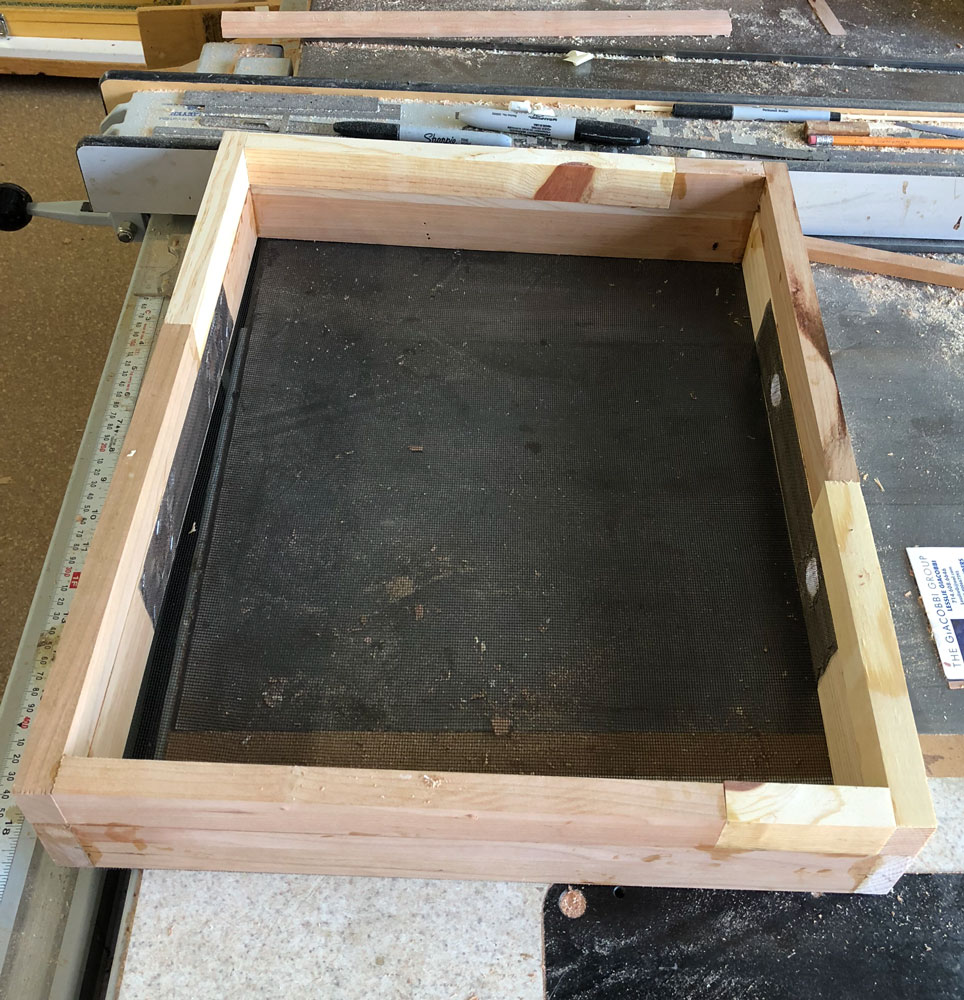
SoCal Beekeeping
Bee Quilt
12/17/2017
Michael Henderson
After I put the telescoping covers on two of my hives, I noticed condensation under the covers. So I did some research on the web to see how people have addressed this. The common recommendation was to make a bee quilt. [Actually, the telescoping covers had nothing to do with the condensation - it was the fact that we had much cooler weather about the time I put the telescoping covers on the hives.]
You might ask, "What's a bee quilt?" That's certainly what I asked. Before I answer that, let me talk a bit about condensation in the hive.
Moisture comes from two major sources in the hive. When the bees have nectar, they evaporate it to produce honey. The evaporation adds to the water vapor in the hive. And in southern California, the bees collect nectar all year round.
But just living in the hive, bees create moisture. The eat nectar (or honey) and metabolizing the nectar generates energy, carbon dioxide and water vapor. So in winter, the bees have lots of moisture in the hive, just like in summer. The difference is that, in winter, the hive cover is cool so the water vapor condenses on the inside of the cold cover (in summer, the hive cover is often warm to hot so the water vapor does not condense). That water can drip down on the cluster of bees and can cause bees to freeze to death. Even if the moisture does not kill the bees, it can cause mold growth on the comb and woodware. Excessive moisture is not good for the bees.
Even though we don't get freezing weather here, I know we can get water condensing on the inside of the top of the hive in colder weather. When I first noticed it, the moisture had wet the tops of the frames on one side of the hive - I thought water had leaked into the hive.
One way to address this is to put a pitched roof on the hive so that the water flows to the side(s) of the hive. Another way is to provide a vent at the top of the hive so that the water vapor can escape before condensing. But vents risk providing openings for robber bees and for insects who prey on bees. The bee quilt attempts to address these problems.
[Side note: This is a good reason to paint the inside of the hive. A big hive will eventually coat the inside of the hive with wax and propolis, but until they get big, the wood can absorb a lot of moisture.]
The bee quilt is a box with a permeable bottom - window screen, burlap, or some heavy cloth. The box is then filled with wood shavings or crumpled up newspaper, or anything similar. Vent holes are cut in the side of the box to provide ventilation to allow the water vapor to escape.
I went through several modifications to the bee quilts I made. I'll point them out and tell you why I modified them. Here's the basic box.

I originally made the box 2 inches high but soon realized that the sides of the telescoping cover would cover the vent holes. So I added about an inch to the height to make it about 3 inches high.
I stapled window screen to the bottom of the box and drilled two one inch holes on each side.
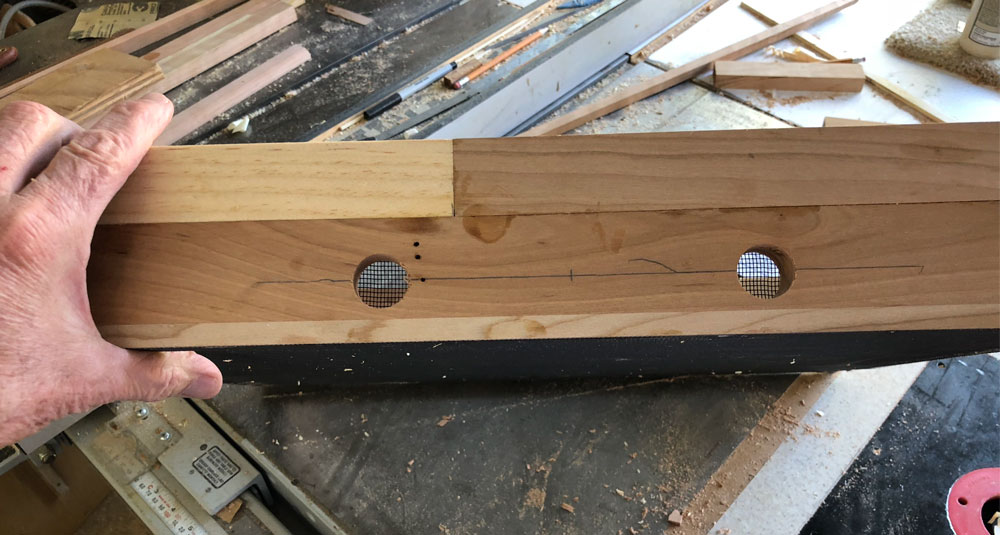
I put window screen over the holes so that insects could not get in.

The bee quilt is put on top of the hive, under the inner cover. I realized that the bees might glue the quilt box to the lower box with propolis and wax, and when I went to take it off, I'd probably rip the window screen on the bottom. So I glued some 1/4 inch strips over the window screen.
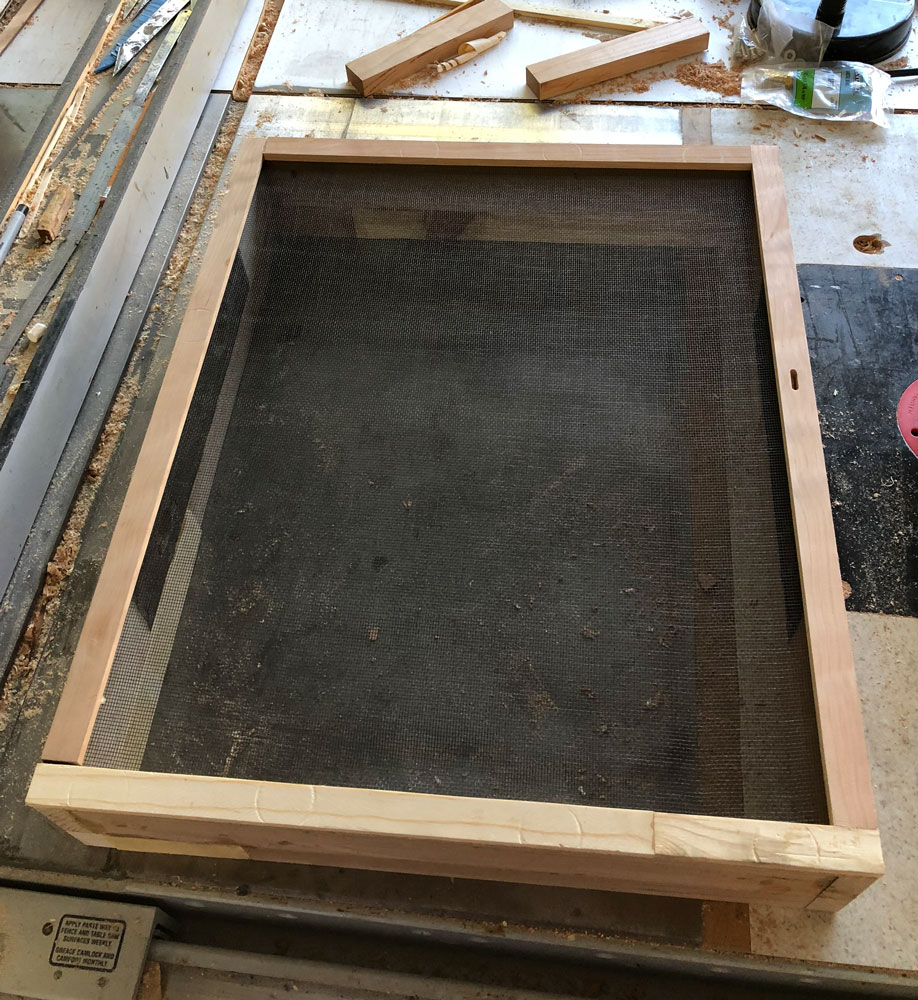
Here's a close up of those strips glued over the screen.

Then I filled the boxes with wood shavings.

I came to realize that what a bee quilt really is, is a top vent for the hive, and I felt that two holes on both sides was too much - so I blocked up one hole on each side. I'll see how they do and if I think they need more ventilation I'll open the other hole on both sides.

Here they are on two hives.

The way they're supposed to work is that if water condenses on the top, it will drip into the shavings and not into the hive. The air flow through the vent holes will then allow the water to evaporate. With the wood shavings, the airflow should be restricted so that the hive can stay warm during the cold nights.
I'll monitor and let you know how it works.
My oldest hive has three supers on it so I'm not worried about moisture dripping onto the cluster. So I didn't put a bee quilt on that one.
++++++++++++++++++++++++
[Update 12/30/2017] I sometimes wonder how I make such dumb mistakes, but I do. These quilts were not painted and were made up of a bunch of pieces of wood glued together. But they are in a very damp place, and the wood of the quilts warped to the point were I had trouble getting the tops off.
I'm making new quilts from a single board per side (no gluing), and I'm going to paint the quilts to help them resist the moisture. I'll also go with the four ventilation holes to try to get enough air circulation to evaporate the moisture in the top of the hives. I'll post pictures when I finish.
I'm starting to understand where some of the moisture is coming from. In addition to making honey, which requires the bees to evaporate water from the nectar, the bees metabolize sugar (from honey or nectar) for energy. Here's the formula for conversion of sugar to energy:
6O2 + C6H12O6 --> 6CO2 + 6H2O
What this says is that when a bee metabolizes one molecule of sugar (specifically glulcose or fructose), she will take in six molecules of oxygen and convert the sugar and oxygen to six molecules of carbon dioxide and six molecules of water.
The bees are doing very well. Both hives are now working the second brood box, although it appears that they are using it for honey storage right now, and not brood.
++++++++++++++++++++++++
[Update 1/2/2018] I made new quilt boxes from one board per side (3 inches high) and painted the boxes with primer and an exterior latex. Here's what the new boxes look like. I put two one inch holes on each side, offset towards the bottom.
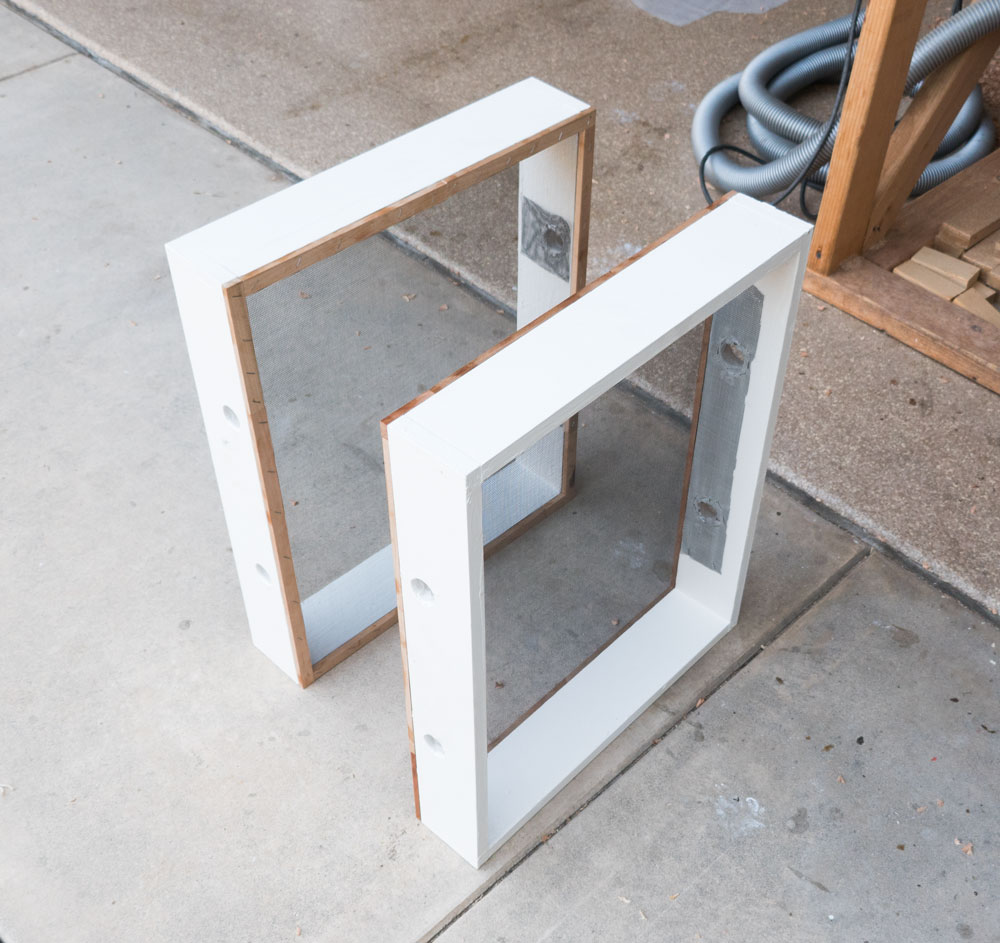
I covered the holes with screen and put screen on the bottom of the quilt boxes.
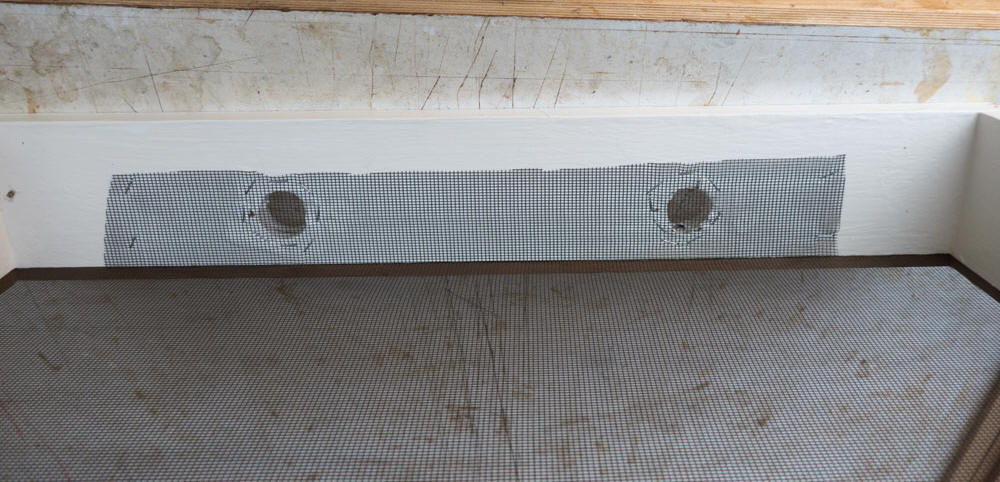
I stapled 1/4 inch strips all around the bottom of the quilt boxes. I felt that if I didn't do that, and the bees "glued" the quilt box to the hive box, I'd break the screen when I tried to separate them. I didn't paint those strips but I stapled them down pretty good. I don't think they will move.
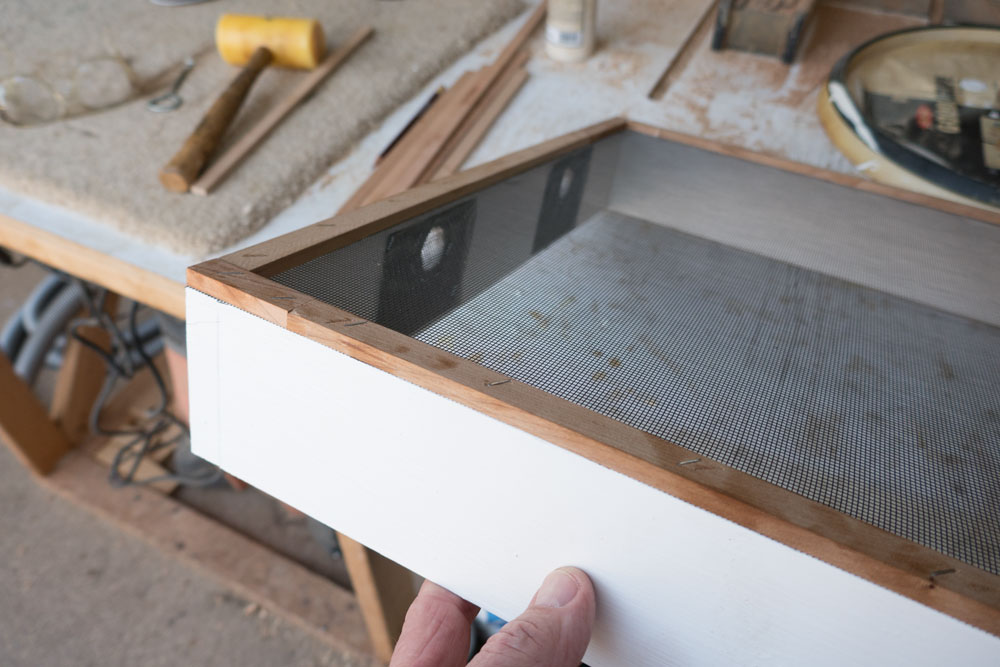
I took the old quilt boxes off of the hives and moved the shaving to the new boxes. I also put the telescoping hive covers on the hives. I painted the inner covers, top and bottom, with primer and an exterior latex. I understand now that the top of the hive has a lot of moisture and the hive components in that area need to be well protected from the moisture.
Here's the quilt boxes and telescoping covers on the hives. The bees seem to be doing very well. They've moved into the upper brood box and are drawing out the comb. Come late spring I'll probably be able to put a super on both hives. Maybe I'll get some honey from them later in 2018.
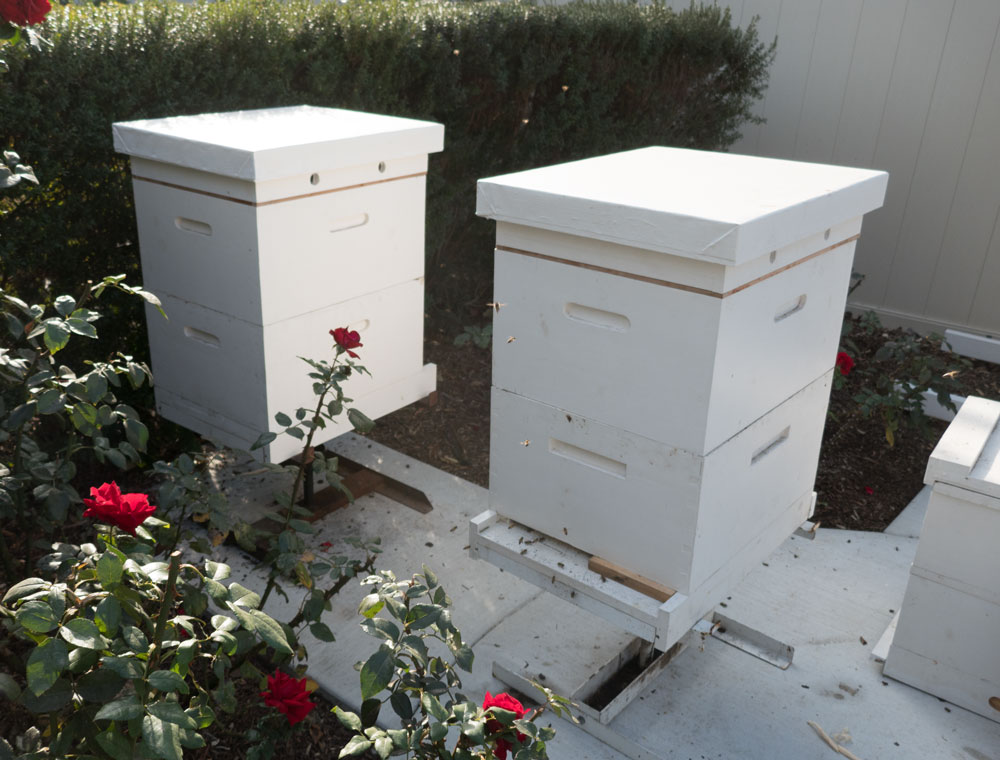
++++++++++++++++++++++
[Update 1/15/2018] I went into the hives today and the bee quilts seem to be working. There was some moisture in the top, but the hive was a lot less wet than before.
I also went into my old hive, the one with three supers on it, which I didn't put a bee quilt on. The outside frames in the top super show obvious signs of having been wet - so I'll have to make a bee quilt for that one, too. Cooler weather becomes a wet problem for the hives.
And just a side note, the bees in the two hives shown above are doing very well. They've moved into the upper brood box and have quite a few frames filled with honey in that box. I added an excluder and a super on both of them. The two hives are about equal in what they have in the hive.
++++++++++++++++++++++++++++++++++
[Update 1/18/2018] I built a bee quilt for my old hive. I'll put it on today and go into the hive to see how they're doing in the brood boxes.

++++++++++++++++++++++++++++++++
[Update 2/23/2018] The bee quilts seem to be helping but there's still a lot of moisture at the top of the hive. The bees are making burr comb on the screen and attaching it to the frames. Also, they seem to be working to seal the screen - they're putting wax and propolis on the screen to close up the holes.
I had been wondering if I could leave the bee quilts on permanently but it's obvious that the bees would eventually seal the screen.
Anyway, I began to get worried that when I went to remove the bee quilt, the screen would be attached to the frames by the burr comb and the screen would tear as I pried the bee quilt off. So I decided to replace the window screen with 1/8 inch hardware cloth. The bees will block that off, also, and attach it to the frames with burr comb, but the hardware cloth will be strong enough to pull free.
I removed one of the bee quilts a few days ago and removed the window screen. With the moisture at the top of the hive, the unpainted wood was soaked and the staples had started rusting. It was obvious that everything needed to be painted.
Here's the first bee quilt with the screen removed and the edge painted.
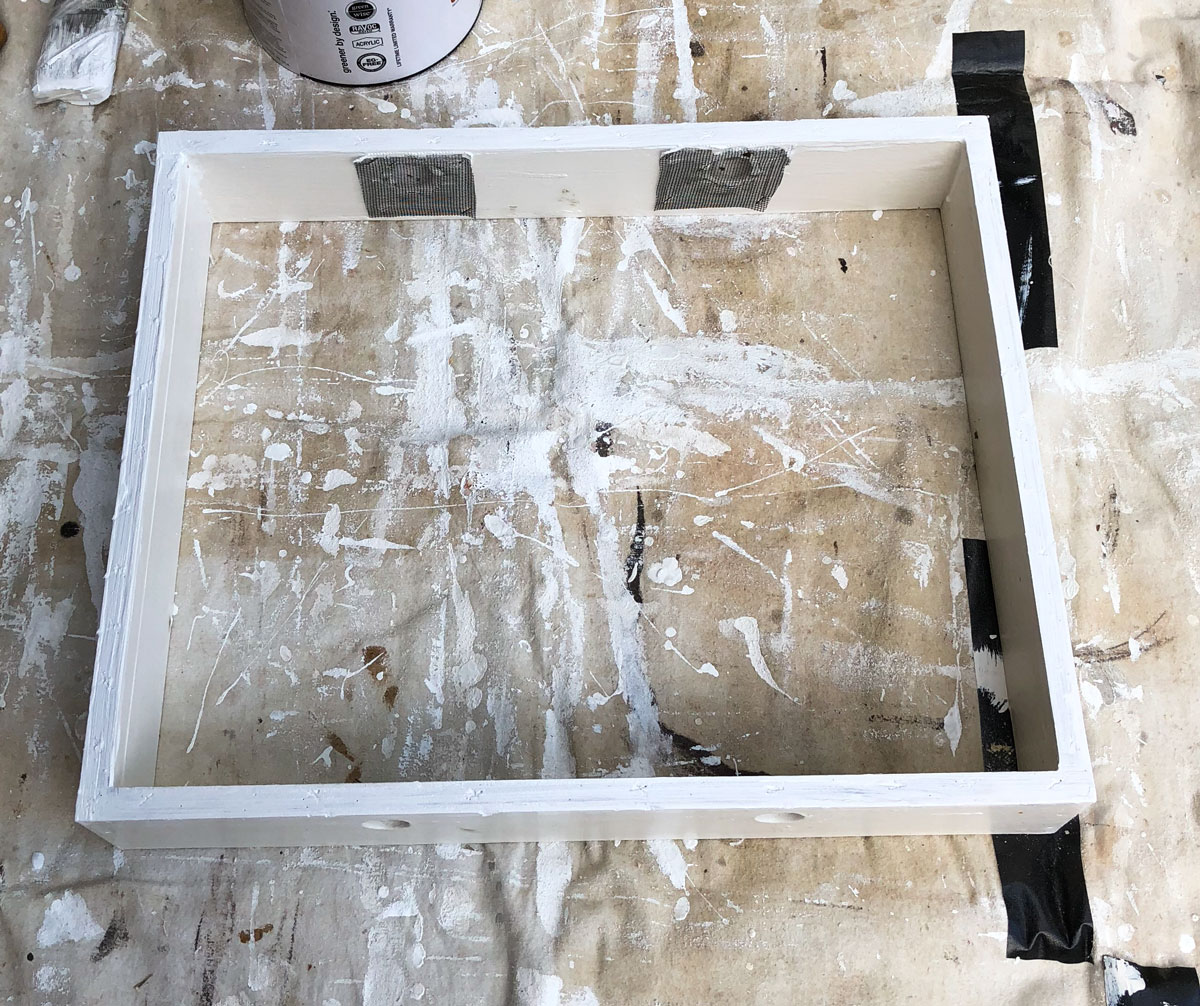
After the paint dried, I stapled a piece of 1/8 inch hardware cloth on the bottom and then strips of 1/4 inch wood on top of the hardware cloth. Then, it was all painted.

Here's the refurbished bee quilt with the wood shaving in it. I replaced it on the hive today.

I then took the bee quilts off the other two hives and refurbished them today. I'll replace them on the other two hives tomorrow, after the paint dries well. I'm really amazed at the amount of moisture at the top of the hives in the winter.
++++++++++++++++++++++++++++++++++++++++++++++++++++++++++++++
[Update 1/6/2019] While the bee quilts worked, I feel that insulating the top is a better solution. The bee quilt captures some of the condensate in the shavings but the moisture stays in the hive. Another problem is that the bees will work hard to seal up the hardware cloth with propolis, eventually sealing the boundary. The bee quilts have to be removed each year and a torch used to burn the propolis off the hardware cloth. Also, I discarded the shavings because they had gotten wet. While I suppose I could keep them in a bag over the summer, they have to be removed to burn the propolis off the hardware cloth
Only some additional time with the insulated tops will tell the story but, right now, they look like the better solution.